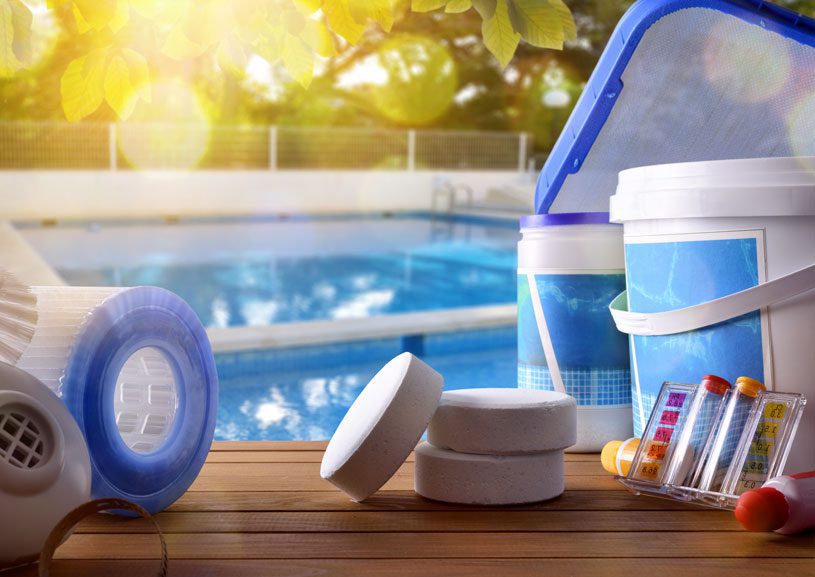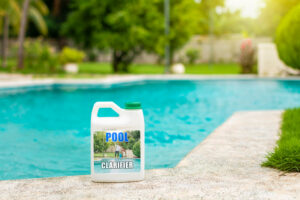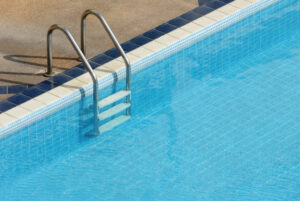The chlorine shortage is still affecting pool owners. How can you reduce chlorine usage to make your supply last longer?
The summer season is almost here! Warmer weather is just on the horizon, which also means it’s almost swimming season! You’re likely dreaming of the day when you can open your pool and take a nice, refreshing dip. However, three years after a catastrophic chlorine plant fire, and two years after the COVID-19 pandemic began, the pool maintenance landscape looks quite different this year.
Chlorine is still hard to find these days, thanks to the plant fire and increased pool construction during the pandemic. Because of this shortage, chlorine prices have also risen in the last few years. As with other products facing similar shortages, the future of chlorine prices looks bleak. In fact, the price of chlorine has increased two to three times over the last two seasons. And it will continue to rise for the foreseeable future.
So, what can pool owners do to combat this shortage? If there’s not enough chlorine to go around, how can you make your supply last? How do you stretch your money to get the most bang for your buck? You want your pool to stay clean so you can swim all summer long, but you aren’t sure what to do next.
Fear not, swimmers. There are several ways you can reduce chlorine usage to make your limited supply last longer. With the following alternative sanitation methods, you can reduce the amount of chlorine your pool needs to stay clean. Read on for our top suggestions by our very own pool professionals.
Mineral Cartridges
The first way you can reduce chlorine usage in your pool is by supplementing with mineral cartridges. Drop-in mineral cartridges contain minerals, such as copper and silver, that sanitize pool water. These minerals prevent bacteria and algae from forming in the water. Some mineral products can also maintain a stable pH level in the water. It just depends on which minerals are present in the kit.
Using a mineral cartridge can drastically reduce the amount of chlorine your pool needs to stay clean. For under $100, you can reduce the chlorine in your pool up to 50%. Most pools require 2-3ppm (parts-per-million) of chlorine. With an added mineral system, your pool will only need 1ppm of chlorine to adequately sanitize the water.
There are a few products available that you can use to dispense minerals into your pool. There are in-skimmer mineral systems, which use a dispenser that is placed into your skimmer basket. Another option is floating dispensers. These dispensers disperse minerals and chlorine as it floats freely in the pool water. The third option is to use an inline mineral system that connects to your pool plumbing system. This option is a little more involved with the installation, but it can be used with most existing plumbing systems.
Algae Preventative
The less algae in your pool, the less chlorine you will have to use. Keeping on top of algae prevention is the second way to reduce chlorine usage. There are a few different methods to prevent algae growth in your pool. You can use algaecide regularly when your pool is clean to prevent algae spores from becoming full-on blooms. Algae spores are carried by the wind and can easily make their home in your pool, so preventing them from growing is the best way to reduce their effects.
You can also use a pool balancer or conditioner to help reduce algae growth and keep your existing chlorine at maximum effectiveness. Pool conditioner helps prevent chlorine from dissipating in the sun’s UV rays. The more effective your chlorine is, the less algae will grow. And the less algae you have, the less you must add chlorine back into your pool to sanitize it. Conditioning your pool is a once-a-year treatment method, so it is cost-effective too.
Test Balance Frequently
The final method to reduce your chlorine consumption is to stay on top of the balance of chemicals in your water. The better your water balance, the less chlorine you will need. Use testing strips regularly to test the pH and other chemical levels in your pool. Based on your results, add other chemical treatments as needed to keep the pH at an optimal balance.
Your pool’s pH level measures how acidic or alkaline your pool water is. pH is measured on a scale from 1 to 14, with lower numbers being more acidic, and higher numbers being more alkaline. If your water is too far to either end, it can cause problems. Keeping your pH at an optimal level can reduce your chlorine needs. For example, a pool with a pH of 8.5 requires 100% more chlorine than a pool balanced to a pH of 7.5.
Benefits of Reduced Chlorine
In addition to saving money and preserving your chlorine supplies, there are several other benefits to reducing your chlorine usage.
Chlorine is an irritant. It dries out the moisture in your skin after swimming and can dull the fabric of your swimsuit. It causes red, irritated eyes if you open your eyes underwater for too long. Chlorine is also harsh, making water harder and less pleasant to swim in if the concentration is too high.
Using the above methods to reduce chlorine usage in your pool helps alleviate these symptoms. Your water will be softer, and skin and eye irritation will be reduced. Overall, using less chlorine will improve the swimming experience.
Bottom Line
The chlorine shortage of the last few years has greatly affected how pool owners maintain their swimming pools. In general, what it takes to own a pool has changed over the course of the COVID-19 pandemic. Our expert service team is always available to answer questions and to help find the right products for your pool. If you’re unsure of how to best maintain your pool, give us a call.
Cincinnati Pool and Patio has been serving Cincinnati homeowners since 1966. Our expert service team is always available to answer questions and help you find the right products for your pool. We can navigate this chlorine shortage and these uncertain times together. Visit our store or get in touch with us today if you have questions or need recommendations.








